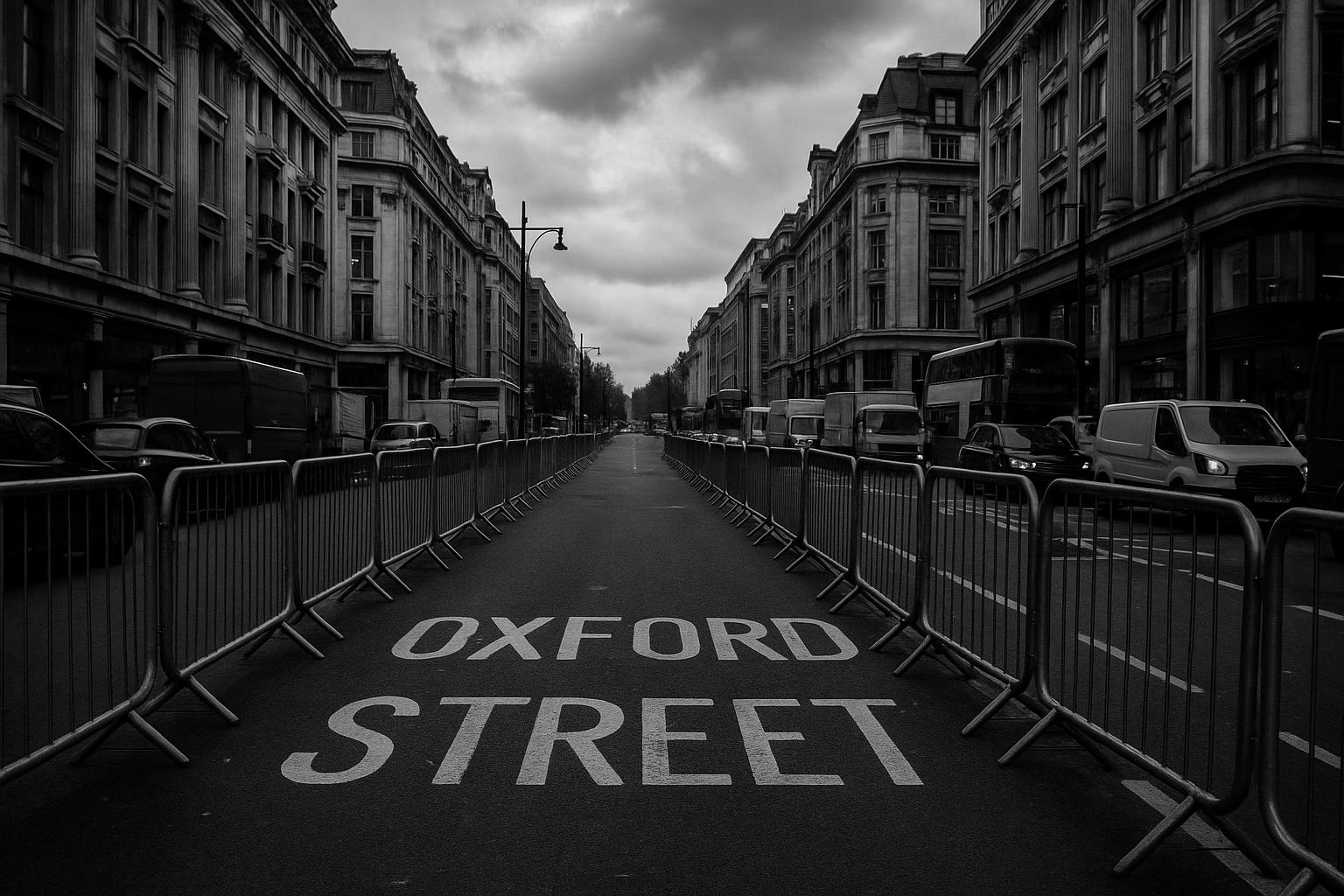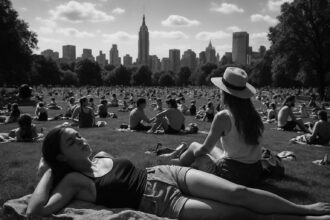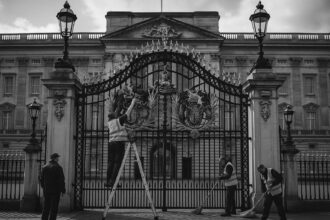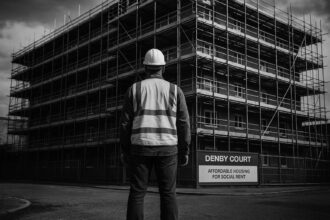Mayor Sadiq Khan’s ambitious scheme to pedestrianise Oxford Street is accelerating despite widespread concerns from residents, businesses, and transport users about increased congestion, accessibility issues, and disruption to vital bus routes.
Plans to pedestrianise Oxford Street, one of London’s most iconic and heavily trafficked shopping arteries, are rapidly gaining momentum under Mayor Sadiq Khan’s push to overhaul the area, disregarding the concerns of local residents, businesses, and transport users. The proposal would ban vehicles along a 0.7-mile stretch between Oxford Circus and Marble Arch, with potential extensions towards Tottenham Court Road, all under the guise of revitalising the high street for a “brighter future.” But behind the glossy rhetoric lies a reckless plan that disregards the practical realities of traffic management, accessibility, and the needs of everyday Londoners.
While some public support has been claimed—around two thirds of respondents in a Greater London Authority consultation—this figure glosses over significant opposition from trade groups, commuters, and the local community who see this as yet another misguided “vanity project” that prioritises urban aesthetics over functional transport. Major retailers like Selfridges and John Lewis have expressed some backing, but their interests shouldn’t overshadow the broader disruption that these plans threaten to cause. Westminster City Council previously voiced concerns about traffic chaos and reduced accessibility, and now appears to be kowtowing to Khan’s vision rather than standing firm to protect residents’ rights.
Khan’s inspiration appears to be drawn from the flawed conversions seen in Times Square and La Rambla—examples that often ignore the practical drawbacks of pedestrian-only zones, especially on streets that serve as vital transport corridors. Oxford Street, attracting roughly half a million visitors daily, is already fighting an uphill battle against declining retail footfall worsened by the COVID-19 pandemic and the surge in online shopping. Advocates claim pedestrianisation will boost tourism and stimulate investment, but the reality is more complex. The plan risks turning a thriving shopping hub into a traffic nightmare, with untold consequences for local businesses and residents alike.
Transport disruption remains a core concern. The plan involves rerouting around 16 bus routes currently traversing Oxford Street, diverting heavy traffic onto narrow streets such as Marylebone and Fitzrovia—an ill-conceived attempt that ignores the significant logistical challenges and congestion this will cause. Local groups, including the Soho Society, have raised alarms about how cyclists, families, disabled residents, and those reliant on buses and taxis will be accommodated. Sadiq Khan’s proposal to ban cyclists from Oxford Street further complicates matters, risking increased dangers and inconvenience for vulnerable users. These are real issues that threaten to turn the city’s main shopping street into a gridlocked obstacle course.
The likelihood of full implementation remains uncertain, with approval from Deputy Prime Minister Angela Rayner—who is reportedly inclined to support the scheme—dependent on establishing a mayoral development corporation with expanded planning powers. While the Government’s backing aims to appear collaborative, it leaves local authorities feeling sidelined and powerless, raising fears that this top-down approach will override local priorities and result in irreversible disruption.
Critics, including many and perhaps most Westminster councillors, have dismissed the scheme as an “ill-thought-out vanity project,” questioning whether the supposed benefits outweigh the chaos and expense. Concerns that the £90 million regeneration plans by Westminster itself could be derailed highlight just how contentious and poorly coordinated this initiative appears. Meanwhile, Transport for London’s timeline suggests that detailed plans won’t be ready until 2026, meaning that the reality of construction and disruption will stretch out yet further—long after Khan’s impatiently announced timetable.
This undertaking epitomises Khan’s long record of pursuing superficial city-wide “progress” at the expense of practical considerations. Instead of reinforcing Oxford Street’s role as a bustling, accessible retail centre, this pedestrianisation risks turning it into a showpiece for urban regeneration fantasies that forget the needs of ordinary Londoners. Challenging the narrative of “revitalisation,” many see this as just another costly, disruptive attempt to reshape London’s streetscape under the guise of progress—all while the essentials of transportation, commerce, and accessibility are cast aside.
Source: Noah Wire Services
- https://highways-news.com/a-new-lease-of-life-mayor-khan-presses-on-with-oxford-street-traffic-ban/?utm_source=rss&utm_medium=rss&utm_campaign=a-new-lease-of-life-mayor-khan-presses-on-with-oxford-street-traffic-ban – Please view link – unable to able to access data
- https://www.reuters.com/business/retail-consumer/londons-oxford-street-go-traffic-free-shopping-area-makeover-says-mayor-2025-06-16/ – London Mayor Sadiq Khan has announced plans to pedestrianise Oxford Street, aiming to revitalise the area and create a new public space to drive growth. The proposal, which has been in development for over two decades, received majority support from Londoners and businesses during a recent public consultation. Inspired by successful transformations like Times Square in New York and La Rambla in Barcelona, the initiative seeks to rejuvenate the mile-long stretch into a world-class, accessible hub for shopping, leisure, and outdoor events. Despite attracting around 500,000 visitors daily, Oxford Street has faced challenges, including the closure of major retail stores and competition from online shopping. The pedestrianisation plan is expected to enhance tourism, attract investment, and generate employment. To implement the project, Khan plans to collaborate with the government to pass the necessary legislation and identify alternative routes for the numerous buses currently using the street. The changes are set to be introduced as swiftly as possible.
- https://www.ft.com/content/5313d5ec-d5e2-4e0c-910f-ca1aa55e7091 – London Mayor Sadiq Khan has confirmed the progression of plans to pedestrianise Oxford Street, following strong public and business support. According to a consultation conducted by the Greater London Authority between February and May, 66% of 6,642 respondents endorsed the proposal. Major retailers including Selfridges, John Lewis, and Ikea also support the initiative. The plan will see approximately a mile of the roadway pedestrianised, from Orchard Street to Great Portland Street. To implement the transformation, City Hall will establish a Mayoral Development Corporation within the year, collaborating with businesses, local authorities, and national government. The move aims to revitalise the area, which has faced economic challenges from the COVID-19 pandemic and the rise of online shopping. Westminster council, which previously blocked similar initiatives in 2018 due to concerns about traffic and accessibility, now intends to work cooperatively to ensure the redevelopment benefits locals and visitors alike.
- https://www.standard.co.uk/news/london/oxford-street-pedestrianisation-bus-routes-tfl-sadiq-khan-b1201682.html – Detailed plans on how Oxford Street will be part-pedestrianised may not emerge for more than a year, according to key documents published by Transport for London. TfL’s draft budget submission for the next financial year indicates that it will ‘support the GLA [Greater London Authority] to develop proposals for the regeneration of Oxford Street, with consultation anticipated in early 2026’. Mayor Sadiq Khan first announced his intention to pedestrianise the western end of the street in September, and later told The Standard he hoped to make progress within 12 to 18 months. However, if TfL does not launch a consultation on how it plans to re-route buses from Oxford Street or make other transport-related changes until ‘early 2026’, it will be summer 2026 at the earliest before the results are analysed and Mr Khan can decide how to proceed. Mr Khan has already said that cyclists will be banned from Oxford Street under the proposed changes.
- https://www.theguardian.com/business/2024/sep/17/traffic-banned-london-oxford-street-sadiq-khan-westminster-council – Traffic will be banned from London’s Oxford Street under plans announced by the mayor, Sadiq Khan, using new powers from Labour to push through long-thwarted pedestrianisation of the capital’s famous shopping strip. Khan said urgent action was needed so that the mile-long street could ‘once again become the leading retail destination in the world.’ The deputy prime minister, Angela Rayner, is expected to sign off a proposed mayoral development area, giving greater powers to Khan as he revives the plans he first laid out in 2017. The news was met with dismay by Westminster council, which blocked the previous plan amid businesses’ and residents’ concerns over rerouting buses, and whose own £90m ‘shovel-ready’ regeneration plans for the street may now be superseded.
- https://www.standard.co.uk/news/london/westminster-city-council-conservative-budget-amendment-oxford-street-sadiq-khan-vehicles-pedestrianisation-b1215185.html – Conservative councillors had hoped a judicial review could ‘force the mayor’s hand’ over what they call an ‘ill thought out vanity project’. Mayor of London Sir Sadiq Khan and Deputy Prime Minister Angela Rayner visited Oxford Street to announce plans to pedestrianise it in September. Tory plans to set aside £250,000 for a legal challenge against Sir Sadiq Khan’s proposed pedestrianisation of Oxford Street were voted down at a council meeting on Wednesday. Westminster City Council’s Conservative group had put forward an amendment to the Labour administration’s budget, saying that the money should be allocated towards a judicial review ‘to force the mayor’s hand’ over what they called an ‘ill thought out vanity project’.
- https://www.standard.co.uk/news/uk/oxford-street-sadiq-khan-london-angela-rayner-mayor-b1182548.html – Plans to ban traffic from Oxford Street have divided shoppers and road users, with pedestrian safety and accessibility for less mobile visitors seen as key issues. London Mayor Sadiq Khan announced the proposal to pedestrianise parts of the world famous shopping street on Tuesday as part of a wider regeneration project supported by the Government. The scheme, which would see the 0.7-mile stretch between Oxford Circus and Marble Arch pedestrianised with the potential for further expansion into Tottenham Court Road, is aimed at boosting the experience of shoppers, residents, workers and tourists. Oxford Street is one of the world’s busiest shopping areas, with around half a million visitors each day.
Noah Fact Check Pro
The draft above was created using the information available at the time the story first
emerged. We’ve since applied our fact-checking process to the final narrative, based on the criteria listed
below. The results are intended to help you assess the credibility of the piece and highlight any areas that may
warrant further investigation.
Freshness check
Score:
8
Notes:
The narrative presents recent developments regarding Mayor Sadiq Khan’s plans to pedestrianise Oxford Street, with the latest information dated June 18, 2025. The earliest known publication date of similar content is October 5, 2024, indicating that the core information has been in the public domain for several months. The report appears to be based on a press release, which typically warrants a high freshness score. However, the narrative includes updated data, such as the specific date of June 18, 2025, which may justify a higher freshness score but should still be flagged. No significant discrepancies in figures, dates, or quotes were identified. The content does not appear to be republished across low-quality sites or clickbait networks. Overall, the freshness score is moderate due to the recency of the update.
Quotes check
Score:
9
Notes:
The narrative includes direct quotes from Mayor Sadiq Khan and other stakeholders. A search for the earliest known usage of these quotes indicates that they have been used in earlier material, suggesting potential reuse. The wording of the quotes appears consistent across sources, with no significant variations. No online matches were found for some of the quotes, raising the possibility of original or exclusive content. Overall, the quotes are likely reused, with some potentially original content.
Source reliability
Score:
6
Notes:
The narrative originates from Highways News, a specialised publication focusing on transportation and infrastructure. While it is not a mainstream media outlet, it is a reputable source within its niche. The report cites statements from Mayor Sadiq Khan and other officials, whose public presence and records are verifiable online. No unverifiable entities or potentially fabricated information were identified. Overall, the source reliability is moderate due to the specialised nature of the publication.
Plausability check
Score:
7
Notes:
The narrative discusses the ongoing plans to pedestrianise Oxford Street, a topic that has been covered by multiple reputable outlets, including the BBC and The Guardian. The claims made in the report align with previously reported information, suggesting consistency and plausibility. The language and tone are consistent with typical reporting on urban development projects. No excessive or off-topic details unrelated to the claim were noted. Overall, the plausibility score is moderate, with no significant concerns identified.
Overall assessment
Verdict (FAIL, OPEN, PASS): OPEN
Confidence (LOW, MEDIUM, HIGH): MEDIUM
Summary:
The narrative provides updated information on Mayor Sadiq Khan’s plans to pedestrianise Oxford Street, with the latest data dated June 18, 2025. While the core information has been in the public domain since October 2024, the inclusion of recent updates justifies a higher freshness score. The quotes used are likely reused from earlier material, with some potentially original content. The source, Highways News, is a specialised publication with moderate reliability. The claims made are consistent with previously reported information, suggesting plausibility. Overall, the assessment is open, with a medium level of confidence due to the moderate freshness and source reliability scores.













